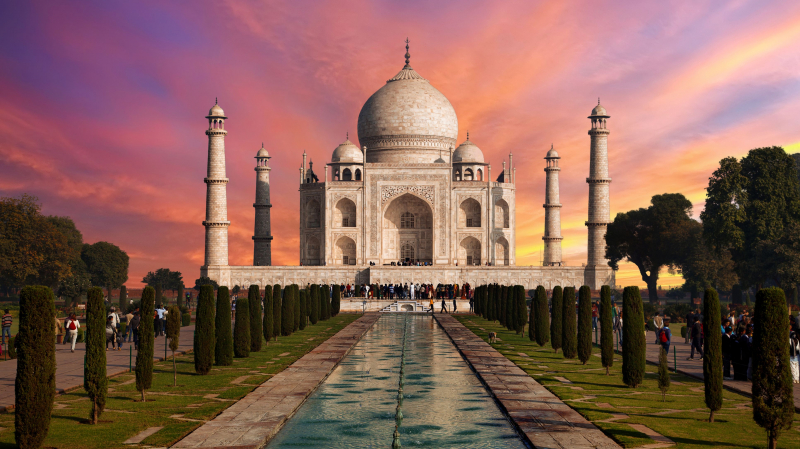Taj Mahal
Taj Mahal is an ivory-white marble mausoleum in Agra, India, on the right bank of the Yamuna River. It was built in 1632 by Mughal emperor Shah Jahan to hold the tomb of Mumtaz Mahal, his favorite wife, as well as Shah Jahan's own mausoleum. The mausoleum is placed informal gardens and is surrounded on three sides by a crenelated wall. It is part of a 17-hectare complex that also contains a mosque and a guest house.
The tomb was substantially finished in 1643, although work on other aspects of the building proceeded for another ten years. The Taj Mahal complex is thought to have been finished in its entirety in 1653 at a cost of over ₹32 million, which would be around ₹70 billion in 2020 (around $1 billion). 20,000 artisans worked on the project, which was overseen by a board of architects chaired by Ustad Ahmad Lahauri, the emperor's court architect. The Taj has used several sorts of symbols to depict natural beauty and spirituality.
In 1983, Taj Mahal was named a UNESCO World Heritage Site for being "India's gem of Muslim art and one of the world's most generally loved masterpieces." Many consider it to be the finest example of Mughal architecture and a symbol of India's long history. The Taj Mahal has over 6 million tourists each year and was named one of the New 7 Wonders of the World (2000–2007) project winners in 2007.











